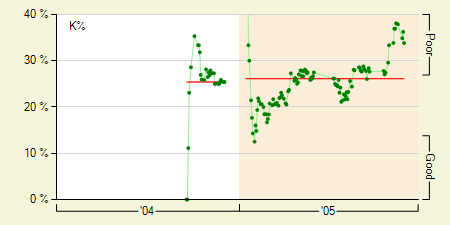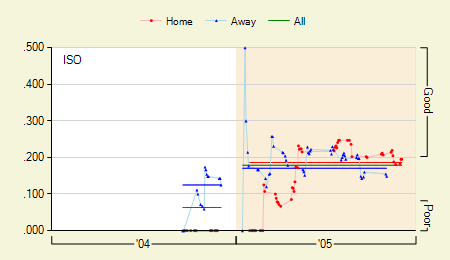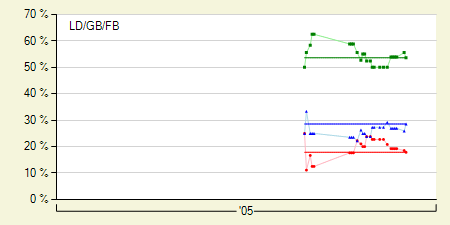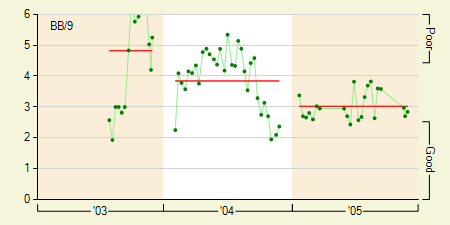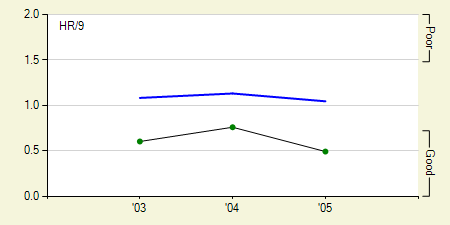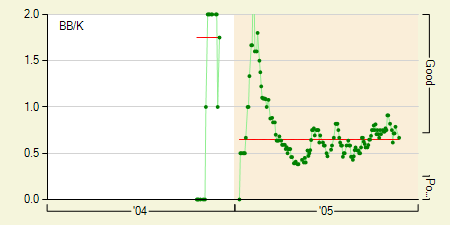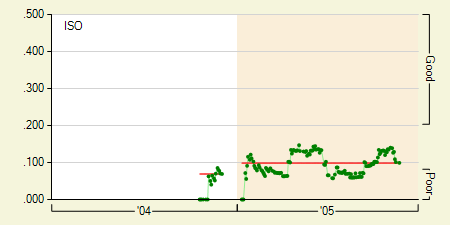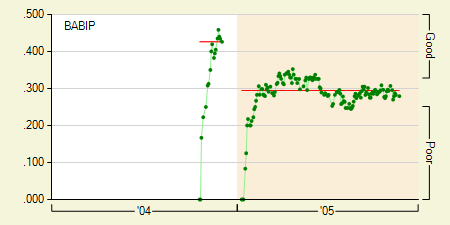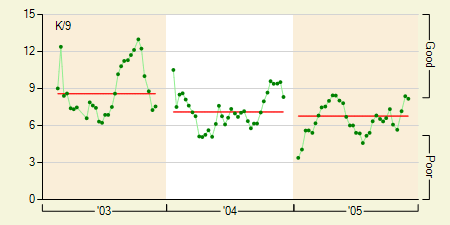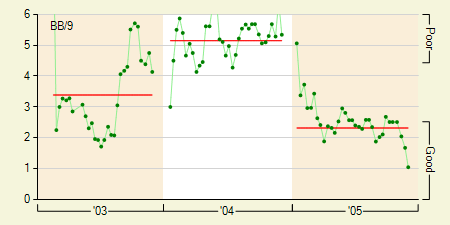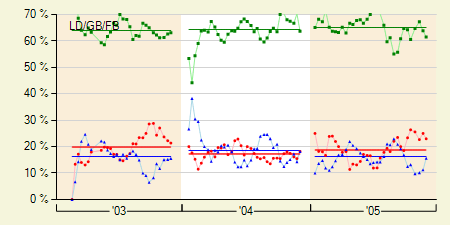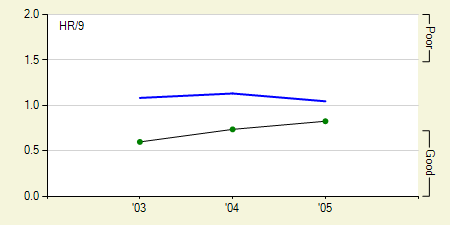Speed Plot – April 4th, 2006
The Daily Best
Brad Penny – Blanking the Braves for 5 innings while striking out 8 and walking none was enough to give Penny top honors for the day. Between injuries in 2005, he actually had a few scattered performances just like tonight’s. His strikeouts per 9 innings (K/9) made a nice climb out of the gutter towards “good” territory last season, but his walks per 9 innings (BB/9) headed in the wrong direction. This was definitely a good start.
Runners Up: Sergio Mitre, Vincente Padilla
Aaron Boone – Today, Boone was a triple shy of the cycle, which has happened 1,141 other times the past 4 years. He’s actually accomplished this not so rare feat 3 other times, but his 4 hits (previous best 3 hits) made this by far his best “triple shy of the cycle” performance. He’s also batting .556 on the year and is playing well enough to keep his job, for now.
Runners Up: Brad Wilkerson, Richie Sexson
The Daily Worst
Andy Pettitte – Joining one of the many quality pitchers that had rough starts in their first outing, Pettitte was pretty horrible giving up 13 hits and 7 runs in 4 plus innings of work. He’s giving up 7 or more runs 17 times in his career, but he’s never given up more hits per inning. This start is definitely in contention for the worst of his 12 year career.
Runners Up: Tim Wakefield, Freddy Garcia
Jason Bay – With everyone expecting Bay to have a huge season, he is hitless in his first two games. He did walk 3 times in the opener, but he managed to go 0-4 today and do absolutely nothing when he was the tying run in the 8th inning. He grounded into a double player earlier in the game too. Those worrying that he will not be thrown many strikes this year, fear not. He wasn’t thrown that many strikes last year either and did just fine. I don’t expect to see him in this spot again.
Runners Up: Laynce Nix, Jeff Francoeur
Prince Fielder: Contact Watch! – Fielder is now 0-9 with 7 strikeouts.
MLB.com’s Customer Service – I have now been on hold by MLB.com for 77 minutes and 6 seconds. I think I have listened to an entire Mascagni opera which makes me want to dig up my copy of “Raging Bull”. Maybe if I pop it in now, I’ll finish it just in time to actually talk with a representative.
The 5 Players I Feel Like Writing About
Johan Santana – Looks like he’s off to his typical slow start as he gave up 10 hits and 4 runs in 5.2 innings against the Blue Jays. He struck-out just 3 batters and walked 1. Over the past two seasons he’s had a 4.05 ERA the first half, compared to a 1.62 ERA in the second half. The biggest difference being his struggles with the long ball early in the season.
Jim Thome – Two games into the season and the man who hit over 40 home runs for 4 consecutive seasons, already has 2 home runs this year. He’s batting .500 on the season, with no strikeouts. His isolated power (ISO) is way off the chart! Aren’t small sample sizes fun?
Brandon Webb – Pitching at Coors Field yesterday, Webb took his ground ball tendencies to the utter extreme by inducing 21 ground balls and a single fly ball. The only pitcher to have a higher GB:FB ratio in a single game the past 5 seasons is Zach Day. Back on June 6th, 2003, Webb induced a personal high 25 ground balls.
Josh Willingham – Joining Albert Pujols and Chris Shelton in the 2006 multi-homer game club, Willingham is showing why he was touted by many as a “fantasy sleeper”. Going 3-7 in his first two games with just one strikeout isn’t too shabby. In the opener he made contact with every single pitch he swung at. So far, so good.
John Lackey – Being the Lackey fan that I am, I was disappointed to see him have such a poor outing in his season debut. He struggled to keep runners off base in every inning, but despite his 5 earned runs and 9 hits, he still struck out 4 and walked only 1 in 4 innings. He’s been a pretty slow starter the past two years (6.18 ERA in April), so there should be much better days ahead of him.
